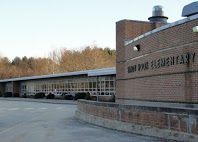Post Time:Dec 18,2012Classify:Industry NewsView:410
Amid reports that the suspect in Friday’s Newtown, Conn., elementary school shooting entered the school by shooting through a glass window near the school’s entrance, industry experts have offered their insights into what type of glass may have been present in the opening—and whether a different type of glass may have made a difference.
Industry expert Bob Brown of Robert L. Brown and Associates suggests the glass most likely was annealed, tempered or an insulating unit. He suspects most likely it was insulating, based on the cold Connecticut winters.
“Likely in a school it had some tempered on the indoor ply for safety,” he says. “If you could walk up to it would be easy enough to knock out with a bullet, not even a high-intensity bullet but just a bullet, or even if you struck it with the butt of a gun. Tempered glass is designed to break so that it doesn’t make severe lacerations and when struck with enough force it will break.”
He adds, “It wouldn’t have been too difficult for [the suspect] to get through that. I doubt it was laminated or bullet-resistant. Very few schools have bullet-resistant glass.”
Julia Schimmelpenningh, global applications manager – architectural forEastman Chemical Company, agreed.
“I am not aware of what type of glass was in the windows of the school,” she says. “However, as he was able to get entry, I assume it was quick and effective. I would expect that is was some form of monolithic glass that could be shattered by hand or with easily accessible tools such as the butt of a gun, rock or similar impacting object.”
A representative of nearby Newtown Glass said he didn’t know who installed the glass, but concurred with Brown and Schimmelpenningh’s assessments. “No one puts bullet-resistant glass in any schools,” he said.
Lyle Hill, president of Keytech North America, pointed out that typically schools use “standard safety glazing materials in their entrance doors—typically tempered or laminated glass.”
“I have worked on schools in inner city locations where crime levels are high and bullet-resisting glass has been used in entrance areas and first-floor classrooms, but these situations are few and far between,” he said.
“I think it is always easy to look at tragic events in retrospect and talk about what could have or should have been done to prevent it but I think in reality, at least this time, the type of glass used would not have mattered much or proven to be adequate in stopping this particular person,” says Hill.
Urmilla Sowell, president of the Protective Glazing Council International and technical director for the Glass Association of North America, provided the following statement about available options for bullet-resistant glass.
“There are safety glazing and protective glazing systems available in the marketplace that have been tested to forced entry and bullet-resistant standards, using established test protocols ,” she says. “These test methods utilize a combination of tools (weapons) and impact duration (the length of time it takes to penetrate the glazing material).”
These materials are designed to protect a building’s occupants, but there can be exceptions to their effectiveness, according to Sowell.
“Tested forced entry-resistant glazing, ballistic-resistant glazing and other protective glazing materials and systems, appropriately speced and properly installed, can enhance the protection of a building, its occupants and its contents,” she says. “They are designed to discourage a person from entering the building for fear of being seen or caught by slowing them down and making it more difficult to penetrate the glazing materials. Unfortunately, someone who is motivated to enter a building to cause damage or harm may find a way, given enough time, because they are not concerned about getting caught or seen.”
Schimmelpenningh offered the following insight as to the possible use of bullet-resistant glazing in such cases.
“I don’t believe one can or should say at this point that ‘such and such’ a glass could have prevented this horrible heart-wrenching event, but I have to believe that safety or security glazing that has impact and glass shard retention characteristics could have either slowed down the entry or alerted someone about an issue that could have gotten help on the way a bit earlier,” she says.
However, change could be a positive for the future of school safety, she suggests.
“It is and has been my belief that all publicly-funded schools should be mandated to have high-performance glazing to enhance safety, security, sound and solar control to give our children the best possible chance of learning, succeeding and growing up to become productive members of our society,” says Schimmelpenningh. "Let’s face it – our fate is in their hands.”
Schimmelpenningh says she also has faced the same question from her own children—one of whom is in elementary school and the other in high school: “Could the glass you make have stopped this man?”
“I had to answer, ‘It may have slowed him down, and caused him to seek another way in giving police a chance to react,’” she says. “Then they asked me what kind of glass was in their schools and I just about cried.”
Source: www.usgnn.comAuthor: shangyi